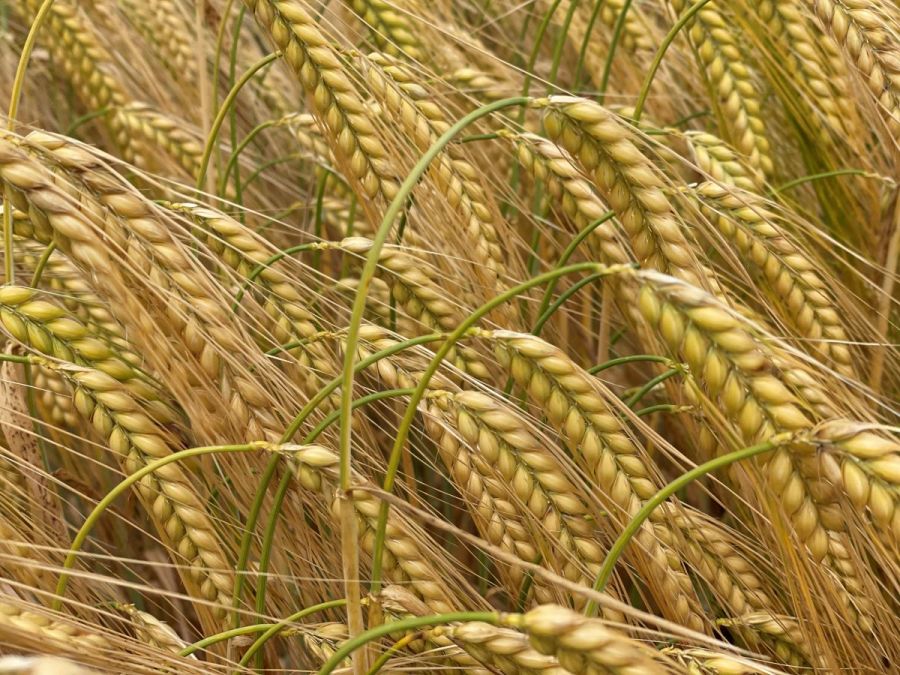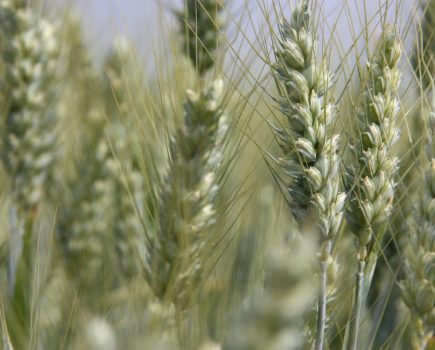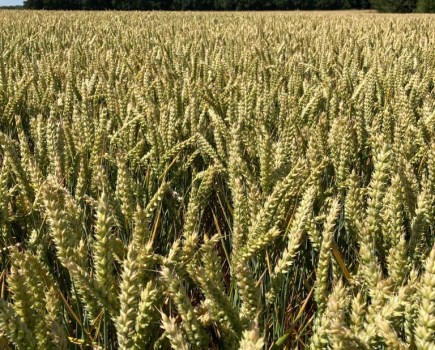In a year where growers are spoilt for choice with the number of new winter feed barley varieties available, it takes a combination of strong characteristics to stand out. CPM takes a closer look at what makes Senova’s Kitty worth considering.
“The variety’s whole package means it offers growers something that’s a bit different.” HUGH HARLEY
By Melanie Jenkins
The sheer volume of changes made to AHDB’s winter barley Recommended List for the 2025/26 season is unlikely to have gone unnoticed, but among the new material is a variety that’s combined characteristics are making it stand out from the crowd.
As Frontier’s Dr Kirsty Richard highlights, there have been quite a few changes to the winter barley line-up. “Nearly 60% of the varieties on the list are new for drilling this autumn, and although KWS Tardis and LG Caravelle are still the mainstays, the number of new additions means it could look quite confusing at first glance.”
But despite this, one variety in particular has stood out to Kirsty: Senova’s Kitty. “The area of winter barley planted has fallen in line with the lack of oilseed rape plantings, and for growers looking at planting it again, they want to find something that’s sturdy and resilient.
“It’s no good selecting solely on a standout yield if a variety has agronomic issues, so what I like about Kitty is that it has a great combination of yield, specific weight and standing ability. It’s varieties with this combination that tend to gain popularity and stay on the market for some time.”
Senova’s Hugh Harley also believes that Kitty stands out amid the raft of new varieties on the RL. “The variety’s whole package means it offers growers something that’s a bit different. Some of the new material is better suited to certain areas but Kitty is very strong in the North and has a good performance in the East and West.”
SOLID PERFORMER
While Kitty isn’t the highest yielding variety on the RL, it’s still one of the top performers, achieving only two percentage points below top UK yielder KWS Valencis at 104%, says Kirsty. “In reality, it should do very well on farm and when selecting a variety from the RL, it’s important to not just look at the left-hand corner, but at combined traits.”
Wynnstay’s Joe Wood points out that the industry has moved past the period where out-and-out yield is the main focus and instead is prioritising the best suited varieties. “What Wynnstay likes about Kitty is that it offers something more than just yield, which’ll appeal to our livestock and mixed farmers.”
Where Kitty does sit highest on the RL is for its specific weight, achieving 72.7kg/ha, highlights Kirsty. “It’s the standout variety in this respect, demonstrating a good bold grain.”
And this characteristic was one of the first things that stood out to Joe too. “The variety has the highest specific weight we’ve ever seen. It has a plump grain that means there are less losses which is beneficial for many of our farmers who are rolling their own grain.
“When I saw it in the field for the first time last year the ear was noticeable right away because it was large and full with plenty of seed on it – it was at this point we decided it would be a good variety for our growers.”
STEM STIFFNESS
Also notable is Kitty’s stem stiffness – with twin resistance scores of 8 against lodging it’s one of only a few two-row feed varieties to match Tardis in this respect, says Kirsty. “But Kitty has lower levels of brackling too, at just 3.2% on the RL.”
And while conditions this year mean stem stiffness might not be top of everyone’s concerns, she points out that the security of Kitty’s lodging scores shouldn’t be overlooked. “It’s something that stands out for me and I’d suggest looking into the variety because it offers the most complete package on the RL of yield, specific weight and stem stiffness.”
Hugh agrees, noting that having the combined highest stranding scores and lowest brackling level on the RL gives growers confidence that the crop will remain standing and allow them to achieve the crop’s full potential.
As far as where Kitty is best suited to being grown, Kirsty points out that it performs well across regions and on different soil types. “Although the data is currently limited, the indication is that it’ll perform well on light land.”
A Valerie cross, Kitty has inherited the dual barley yellow mosaic virus (BaYMV) resistance genes – rym4 and rym5 – against strains 1 and 2, she adds. “While we’re accustomed to having strain 1 in the UK, strain 2 has recently come from the Continent. As a soil-borne virus, we’re going to require more varietal resistance to help protect against it.”
And while this is a useful trait to have, Joe suggests it might not catch most growers’ attention. “The disease isn’t a focus for a lot of people but what’s key to consider is that it can sit in the soil for 20 years. Once it’s disturbed by machinery, it can become a significant issue, so having both strains of resistance is useful and could become standard in time.”
Aside from BaYMV resistance, Kirsty observes that Kitty is consistently strong across its disease resistance package, with a score of 7 against rhynchosporium a particularly attractive feature.
However, scoring a 5 for brown rust, means Kitty is weaker against this disease than other varieties. Despite this, Hugh points out that last year was an exceptionally bad year for the disease and so the variety was under high-stress conditions compared with years where it’s less of an issue.
“I expect to see the variety perform even better in years where brown rust isn’t so prevalent. It’s also a disease that’s more easily managed than some of the others, but growers are advised to keep on top of it.”
With an untreated yield of 81%, Kitty doesn’t score as highly as some other varieties, but Hugh believes this is down to the difficult brown rust season it experienced. “I think this is probably what’s impacted Kitty’s untreated yield score and I’m hopeful that this year we’ll see it do better in trials where different disease pressures are higher.”
While slightly later to mature than some of the other varieties on the RL at +2 compared with the control KWS Orwell, Kirsty highlights that it’s hard to know how the summer will pan out, so having a spread of maturity across any crop can be useful.
According to Hugh, Senova doesn’t perceive the variety as late in its maturity. “Our seed grower last year also grew Tardis and he went from cutting this straight into Kitty, so don’t be put off by the maturity rating.”
When it comes to market interest, he points out that there was a buzz among merchants about Kitty last year. “The variety really stood out to them and we saw a lot of multiplication grade seed go out. It’s now available nationwide and I expect to see it take a decent amount of market share – especially in the West where there are mixed farms that’ll want to grow barley for feed.”
Joe sees Kitty initially taking over from Valerie among Wynnstay growers. “I think it could also take market share from Tardis despite the higher yielders on the RL. It’s best suited to growers looking for a more robust variety and I think there’s potential for it to take a large share of the market.”
This article was taken from the latest issue of CPM. Read the article in full here.
For more articles like this, subscribe here.
Sign up for Crop Production Magazine’s FREE e-newsletter here.




